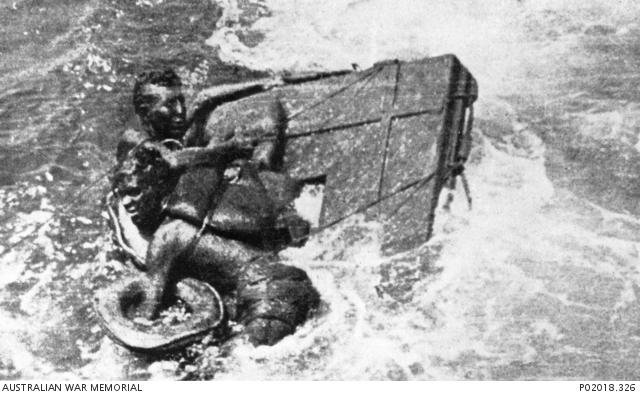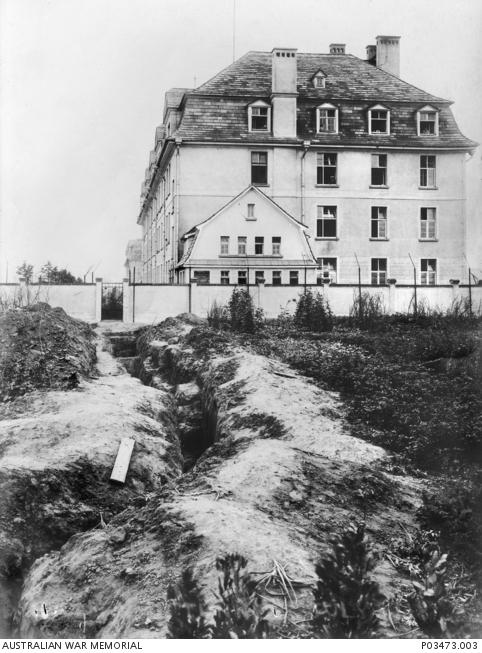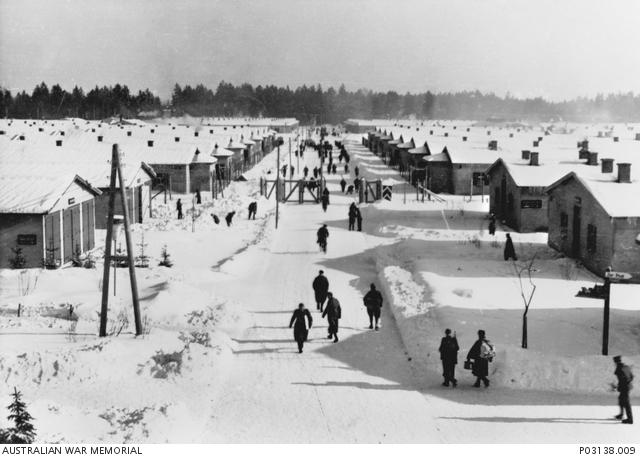The complex story of Australian prisoners of war
The horror of hellships, death marches, and starvation, and the drama of great escapes, has shaped the public perception of Australian prisoners of war. But there is a more complex story, and the thousands held in captivity during the two world wars and the Korean war cannot define their internment only by these experiences.
Leading historians, veterans, and family members will present new research on what it was like to be an Australian prisoner of war at a conference to be held in Canberra next week.
“There are many stereotypes and generalisations made when it comes to describing the experiences of Australian prisoners of war,” says Australian War Memorial historian Dr Lachlan Grant, one of the conference conveners. “What we need to remember, however, is that different circumstances, different camps, different camp commanders could all equate to quite different conditions and experiences. We therefore need to consider that every one of the approximately 35,000 Australians who became prisoners of war often has their own unique story, a story that might not fit the stereotype.”
During the First World War, just over 4,000 Australians became prisoners of the Germans and Turks. In the Second World War more than 30,000 were taken captive – 22,000 by the Japanese, and 8,500 by the Germans and Italians in Europe. In the Korean war, 30 Australians became prisoners of Communist forces.

As the great majority of Australian prisoners were taken captive by the Japanese in the Second World War, it is their stories that are the most well known. In particular, much has been written about the most brutal and horrific experiences, including beatings, transportation on cramped ships, and long jungle marches by emaciated prisoners. At the conference, titled Prisoners of war: an Australian experience of captivity in the 20th century, historians will address these experiences and offer new interpretations as well as present other lesser-known prisoner of war stories.
“Prisoners of the Japanese have forged a unique place in Australian national history, but as speakers at the conference will demonstrate, prisoners of the Germans, Italians and Turks have much more in common with those who were captives of the Japanese than many people may realise,” says Grant.
“What is exciting about this conference is that many of the speakers will be looking again at the actual experience of prisoners of war. Much of the work previously done by historians was based on oral history testimony from ex-prisoners of war. Now historians are examining the largely overlooked, significant collections of empirical evidence that are held within the Australian War Memorial’s collection and within the National Archives of Australia. There is also new work being done that highlights the importance of prisoners of war for intelligence-gathering for military operations, which provides a new perspective and raises new questions.”
Australian War Memorial historian Aaron Pegram, also a convener, says some people may have a romantic view of captivity based on the stories of escapes made by prisoners from camps in Europe during the Second World War. Pegram will speak at the conference on the experience of Australian prisoners in Germany during the First World War, and the realities of escape.
“Contrary to popular literature and feature films, the men who made successful escapes during the First World War were exceptionally few,” he says. “This was an era when there was no official directive on what a man should do if he fell into the hands of the enemy. It was certainly before the creation of intelligence organisations such as Britain’s MI9, which expected prisoners to escape. For men who were far from the violence of the front line, in relative comfort due to the efforts of the Red Cross, and who were aware the war was coming to an end, staying put and not escaping made a lot more sense than trying to make a break for freedom.”

One Australian who did successfully escape was Private Ronald McKay of the 56th Battalion, who had been captured at Hollebeke near Ypres in November 1917, and spent most of his captivity working on a farm near Oeffingen in Germany.
“In June 1918, McKay hatched a plan to try and cross mountainous terrain and dense forests in bitterly cold weather,” says Pegram. “He bartered food with hungry Germans for a compass and map of the area, and travelled by foot 200 kilometres to Switzerland. There were 23 other prisoners working at the same farm, but no one else was keen enough to escape with him.”
The two-day conference is jointly hosted by the Australian National University and the Australian War Memorial, and supported by the Department of Veterans’ Affairs. The keynote address will be given by Christina Twomey of Monash University, who will speak on “Compensating captivity: POWs of the Japanese in postwar culture”. Other speakers include historian Joan Beaumont of the Strategic and Defence Studies Centre at the ANU, broadcaster and author Tim Bowden, and former prisoners of war in Korea, John MacKay and Ron Guthrie.
